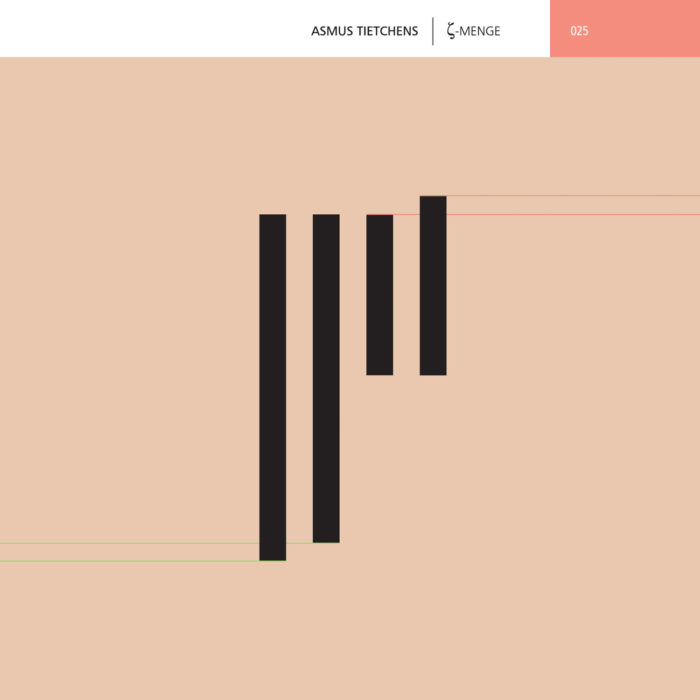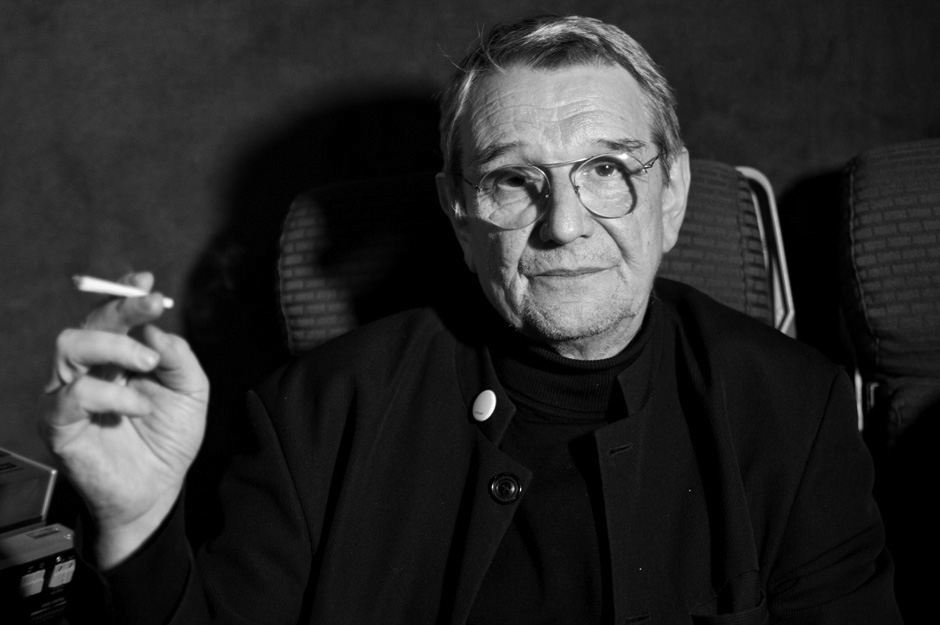Highly respected and hugely influential sound artist Asmus Tietchens (who not so long ago had an article dedicated to his work in the Wire) has been writing music since the 1960s, with his first forays into electronic music appearing on the scene in the 1980s. Z-Menge (Zeta Quantity) is the latest addition to Tietchens’ Mengen series, which began life with a triptych of releases on the now deceased legendry Ritornell label. Taking white noise and the sine wave as basis for the tracks (don’t run away now, it gets better!) Tietchens’ primary strength is his use of space. He is noted as saying that 20th century art lost sight of three dimensional space, and with these musical experiments he is trying to recreate that sense, the sense of distance and enormity. This is all very well, and the album does carry these ideas fairly consistently, yet what startles me about this particular Tietchens release is the subtle melodic elements. The third piece on the album ‘Teilmenge 37’, could even be compared to William Basinski’s work, with a gorgeous decayed loop at the core, embellished with external sounds giving it a feeling of immense depth. Z-Menge is certainly not an album for everyone, but a rewarding experience and a landmark in Tietchens’ ongoing series.
(Boomkat, UK)
Due to its inherent (and often only apparent) coldness, Asmus Tietchens’ music has never been analyzed with the due care. That’s an awful shame. There are young “composers” out there that get all the merits for something that – voluntarily or not – they ripped off the German’s sketchbook. Probably not a bit interested in all of the above, Tietchens keeps releasing distillates of electronic sapience that I appreciate more and more as the years go by, and Zeta-Menge is surely one of his best recent works. Four tracks, detached as ever yet so significant in their austerity, show just a tiny quantity of this master’s vision, probably not enough for the mass of pretender-followers to comprehend it in full. On a continuum of ghost noises, sparse discharges sounding like a malfunctioning computer dampened by droplets of poisoned water splash right into an uneasy silence. A muted chorale of underwater lamentations goes on and on for ten minutes while deformed shapes and aborted melodies struggle to gain a tiny place in a malaised light. Tietchens does not betray his philosophy, remaining separated from the rest of the music world through the very core of his creations. Releases like this one are a precise reaction to the uselessness of patterns and decorations, a self-styled reductionism that©ös not a fashion but a necessity. Concepts are there to be grasped and if one doesn’t have the inner means required to penetrate a well defined scheme of things, then it’s nobody’s fault. And it looks to me that Asmus Tietchens is progressively getting tired of explaining his insight, if he indeed ever tried to do that. He throws out a few messages, then returns to silence. We should respect that silence, but we never do.
(Touching Extremes, IT)
Four steady-state extrapolations that, deep within the minimalist envelope, act for all the world like a suite possibly entitled Duets for Drone and Something Metallic, an interesting advance on the practice of the drone, which in so many cases proves to be more focused on process than result. The two components are widely separated by their respective shapes and their interaction is purely and only juxtaposition. The drones themselves vary internally and in comparison with one anotherÜtraveling from somewhat bristling and atonal reaches that are chillingly beautiful in their remoteness to more reassuring, enfolding in warmth and even rhythmically subsumed surfaces that nearly leave the listener feeling thumb-ready and in utero. The contrasting voice is spare, aggressively forward in the mix and seemingly intent on unsettling the already settled. The character of this contrasting voice is e-metallic, occurring in tight, sharp envelopes sometimes stretched and pulled up or down or through a pitching and shifting apparatus. If played linearly these events begin as a single, repeated voice separated by large time intervals which, as the music progresses, become shorter as the voice simultaneously becomes more varied, finally succumbing to a variety of contortions which, carried out to greater extremes may in fact prove to be the source of the drones, or some aspect of them. The surface impression is, again, one of an almost oil-and-water-like juxtaposition. Yet there is a nagging clarity about the whole thing, perhaps due only to the stark lack of any interpolation. Or the deeper, no longer perceptible unity of these two very distant poles. In which case it’s interesting to think about these pieces instead as extended solos, their origin and result folded one on top of the other by simply removing the processes that separate their beginning and end.
(e/i Magazine, US)
Z-Menge is the latest in the ongoing Mengen series from Hamburg electronic sound adventurer Asmus Tietchens. Although his voluminous catalog over the past three decades has ranged from tape music and musique concrete collages to krautrock ambience and experimental electro-pop, Tietchens’ recent sonic investigations have revolved around sine-wave tones, micro-sound frequencies, digital noise, and structural dynamics. An adherent of “absolute music,” Tietchens’ minimal meta-music compositions have been marked by their clinical, mathematical efficiency and rigid formalism. These four lengthy tracks are no different. Ironically, in spite of Tietchens’ single-minded concentration on structure above all else, his sound fields are easily immersive. One reason for this, at least on Z-Menge, are the dark ambient drones that hover and linger in the background – sometimes ominously, sometimes more benignly. These act as cushions for the sharp, foreground rhythmic noises, whether it is icicle-like timbres on the underground cave ambience of Track 1,; the swelling digitized insect life and distant melodies on the jungle-at-night environment of Track 2, the metallic gamelan stabs of Track 3, or burbling noises and vinyl pop-and-crackle cadences of Track 4. When it comes to the placement of these foreground noises, Tietchens has a marvelous sense of timing, knowing just how to keep the listener guessing and showing a sense of fun that you wouldn’t expect.Tietchens may not have intended these measured, austere compositions to be playful, but perhaps his works possess a dry sense of humor that we have missed all long.
(Grooves, US)
As a non-classical trained person, I don’t know how many letters the Greek alphabet has, but Asmus Tietchens reaches with Zeta-menge the sixth letter, following Alpha, Beta, Delta, Gamma and Epsilon. It’s a specific group of works, like not is uncommon with Tietchens to work in groups (one could think of his various works with water sounds called ‘Hydrophonie’), that deals with the processed sound of sine waves and white noise. In all his work, the ‘menge’ series is Asmus in his most reduced form. Somewhere there is a basic hum, that in ‘Teilmenge 37’ sounds like someone is breathing. Somewhere there is a sound that leaps in and out, sometimes there is a slight variation in that sound. There is somewhere some change, but not much. And that’s about it. Highly reduced material, but full of intensity. Play this loud and very detailed variations will occur in the material. Play this soft and only the ‘top’ sounds will be clearly heard, which would be a pity. In all this vast emptiness there is a lot of stuff to discover. Maybe with six albums, the concept of the Menge series is quite clear, but perhaps Asmus will give it another dimension in the future. He can do that.
(Vital Weekly, NL)
On Z-Menge, Hamburg’s electronic music elder statesman works with a familiar, simple set of ingredients: sinewaves, white noise, analog synthesizers. As with earlier installments in this long-running series, this sixth Mengen release is spare and austere. Each of the four ‘Teilmenge’ contained in Z-Menge is a near empty soundscape, as quiet, fluid hums are punctuated by both wriggling droplets and angular shards of metallic sound. A profound sense of stillness permeates throughout, but, as you focus in on the sounds (preferably listening at relatively high volume or on headphones), the level of movement and detail is utterly fascinating. ‘Teilmenge 42’ in particular teems with microscopic detail and is my favorite ‘Teilmenge’ to date. Surprisingly, there are even occasional elements of melody to be found within these superficially barren landscapes, such as the tidal, aquatic drift of ‘Teilmenge 37′ which recalls, ever so faintly, Tietchens’ abstract lounge project, Hematic Sunsets. Z-Menge is a lovely and enthralling example of the joy of sonic reduction.
(Rare Frequency, US)


